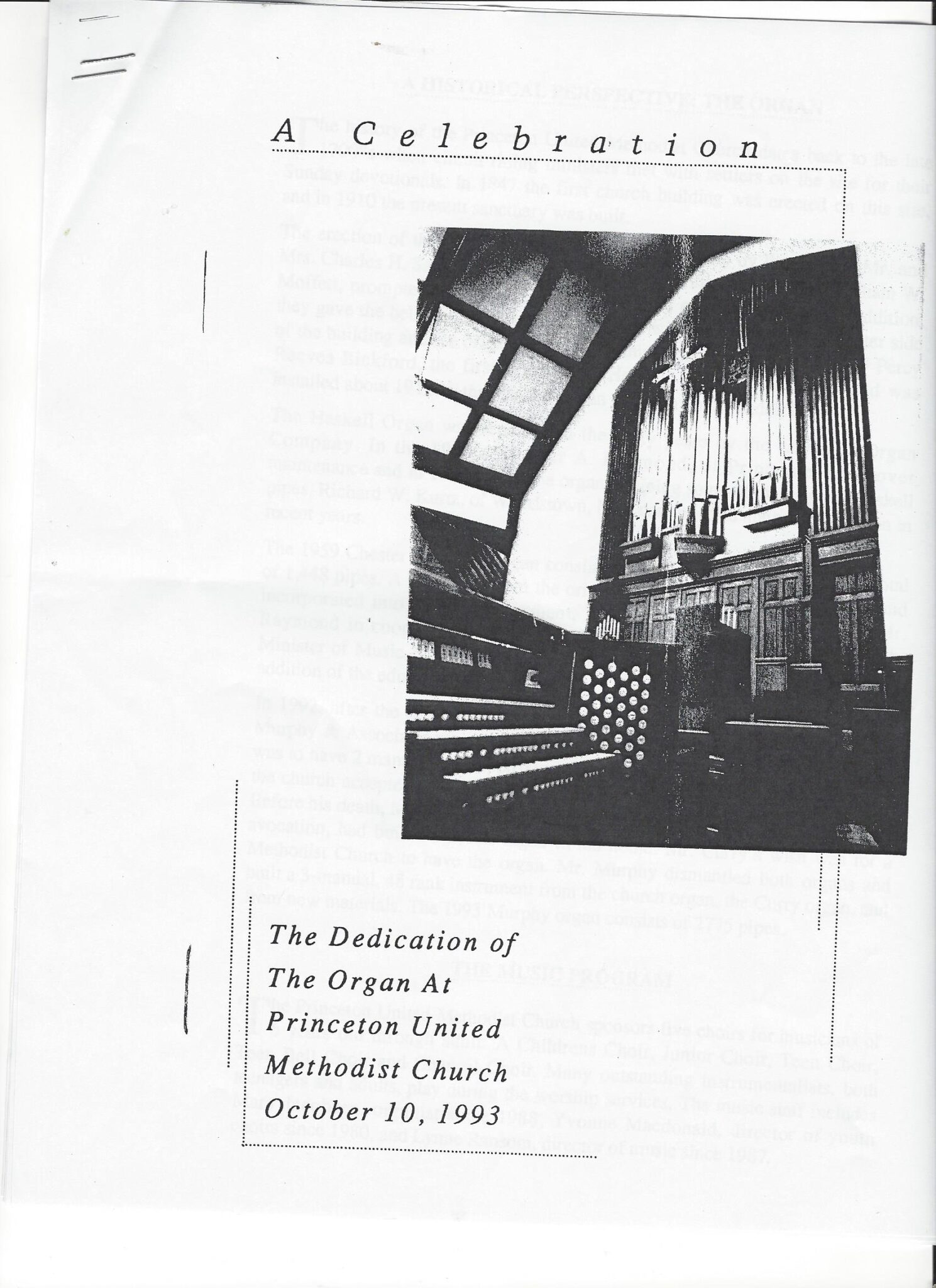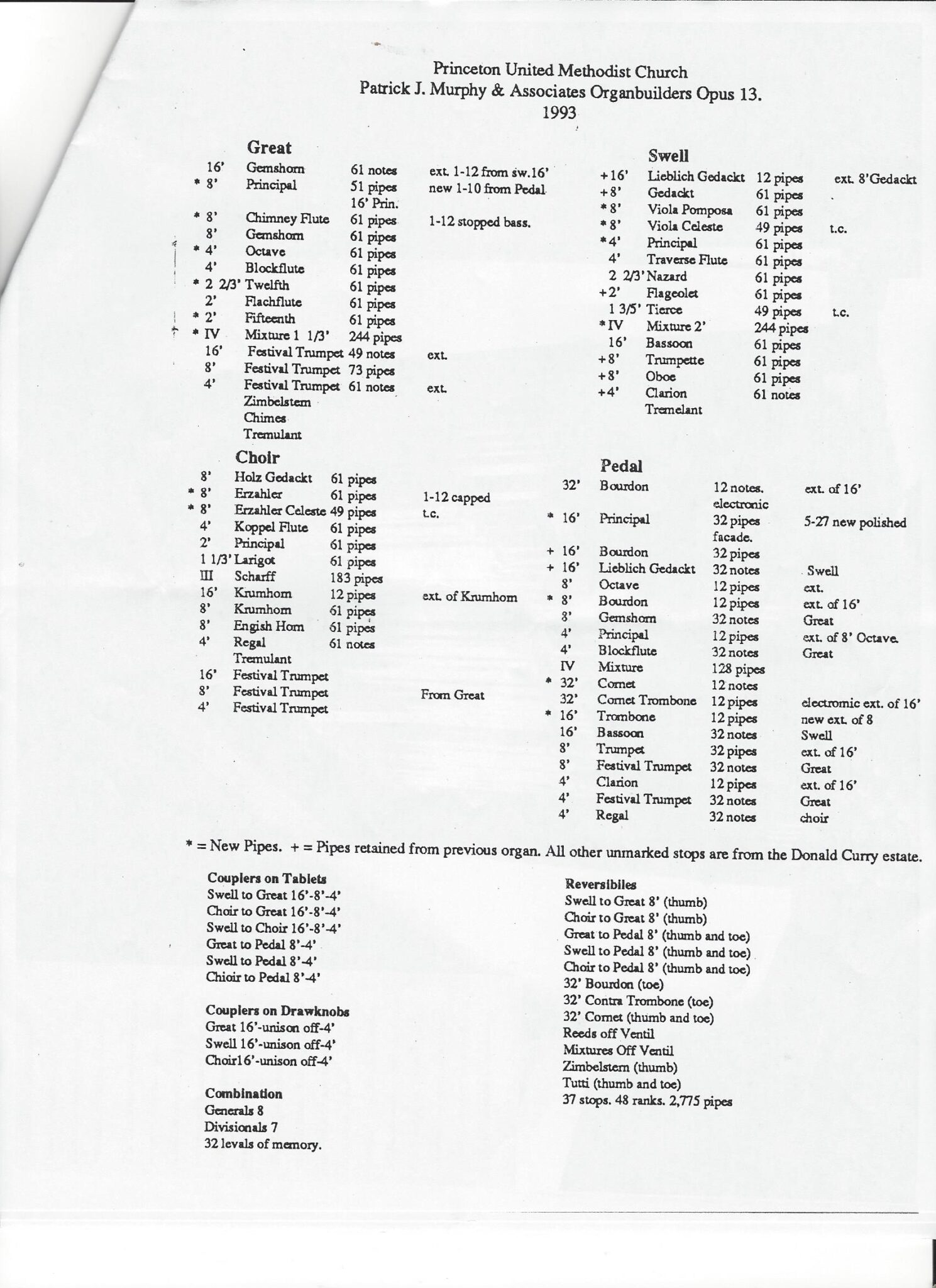Not every church is fortunate enough to have a real pipe organ. Several times in Princeton UMC’s history, the congregation had to make the decision to financially support what Mozart called ‘the king of instruments.’ Each time they found the funds.

The first organ at Princeton UMC was installed by the Haskell Organ Company of Philadelphia in 1911.
(Princeton University Chapel’s Skinner organ has four ranks, was installed in 1928 and restored in 1991).
Haskell pipes – constructed to lower the pitch of the pipe without making it a great deal longer — were a relatively new invention then.
Charles Sanford, a friend of the pastor, donated the cost of the Haskell organ, along with monies for the stained glass window in the Sanford Davis Room and the bells for the tower.
When the first floor of the education wing was added in 1959, a Princeton-based, nationally-known organ maker, Chester A. Raymond, rebuilt the organ and was able to retain some of the original Haskell pipes. (These pipes have a ‘trace more string quality,’ according to some experts.)
The aging instrument needed repair in 1992. Though plans called for two manuals with 24 ranks, the project expanded when the church accepted an organ from the estate of a Lincroft-based engineer, Donald Curry. He had built a 98-rank theater organ in his home, and he wanted it to go to a Methodist church.
From the two organs, plus some new materials, Patrick J. Murphy built a 3-manual, 48-rank instrument with 2775 pipes.At that time Opus 13 occupied a prominent place in the portfolio of his young firm; the company is now one of the largest full-service organ builders in the Northeast. Murphy’s firm continues to provide maintenance for PrincetonUMC and recently installed the recital organ from Peabody Conservatory in Baltimore at St. Pauls Roman Catholic Church in Princeton.
The music staff included Mary Jacobsen, organist since 1988; Yvonne Macdonald, youth choir director since 1980; and Lyn Ransom, director of music since 1987. The organ has been helping Methodist musicians praise God since then 1993.
Currently, Hyosang Park is PUMC’s music director, and Tom Shelton directs Children and Youth Choirs. Yang-Hee Song plays the 25-year-old instrument with this impressive list of 37 stops and 2775 pipes, including some from the original organ.
For comparison, Princeton University Chapel’s Skinner organ has four ranks, was installed in 1928 and restored in 1991. Bristol Chapel’s Aeolian-Skinner organ on the Westminster College campus has 3 manuals, 40 stops, and 50 ranks. Princeton Theological Seminary had a free-standing Haskell organ in 1910 and installed its most recent organ in Miller Chapel, built by Paul Fritts and Company, in 2001.

